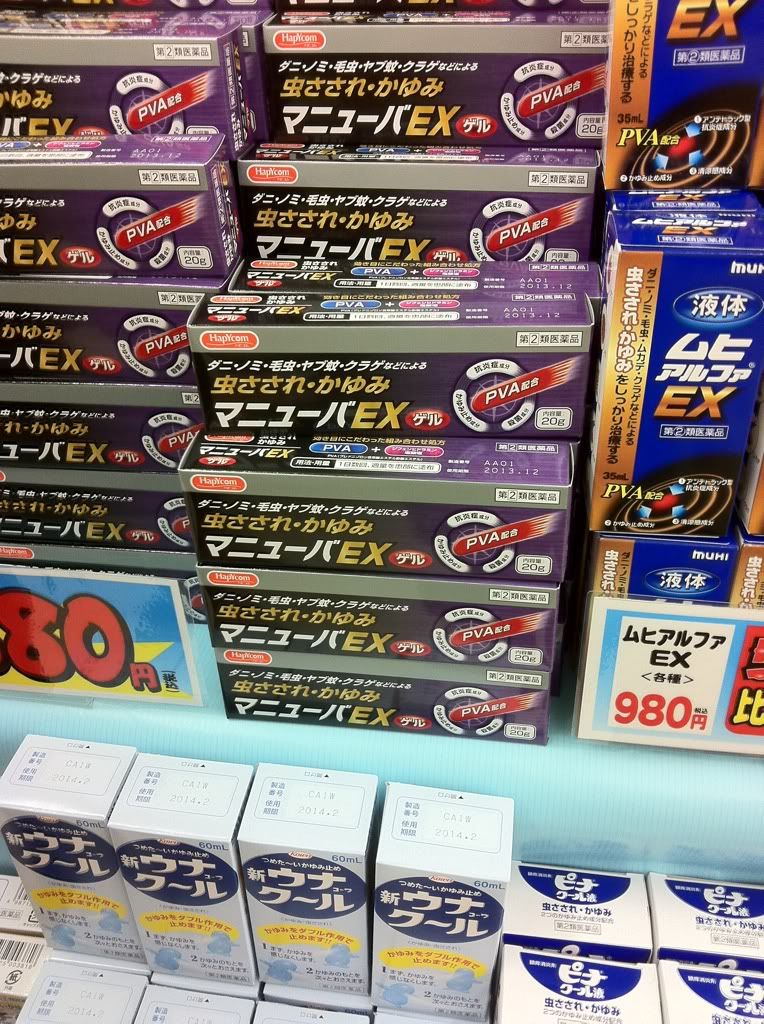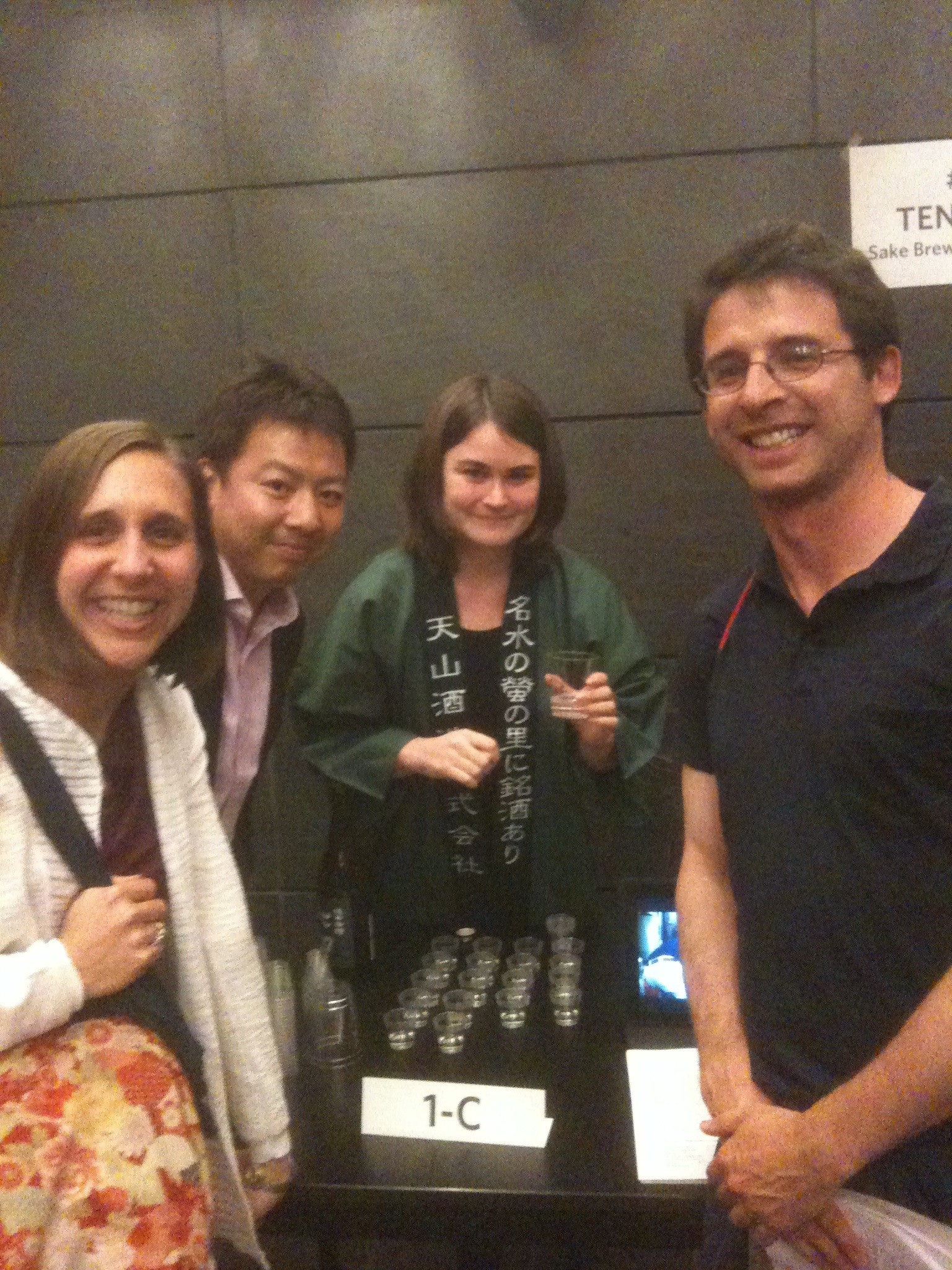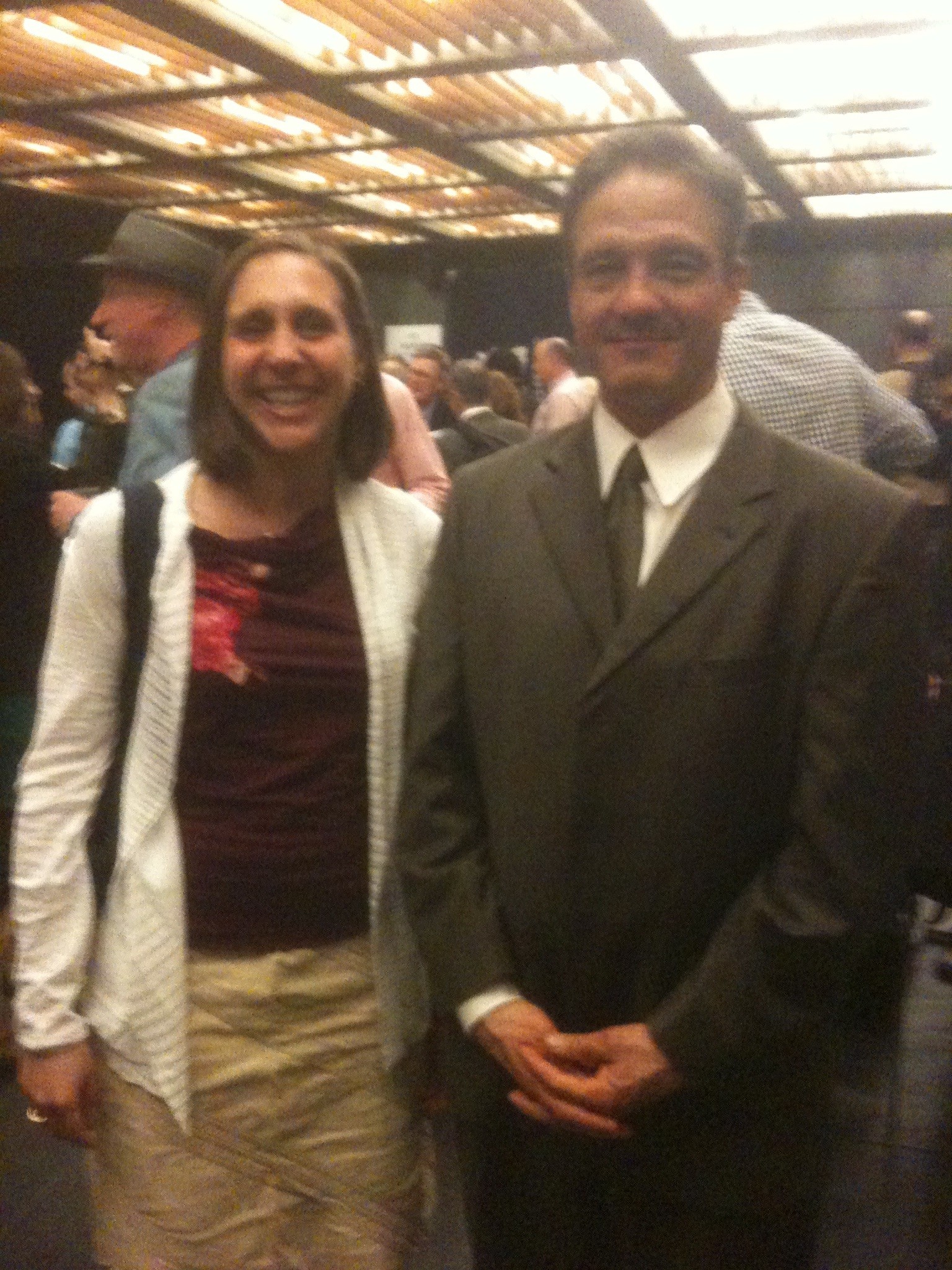MEF Bruce Rutledge’s Chin Music Press launches innovative “BooksRX”
MEF Bruce Rutledge, founder of Seattle-based independent book publisher Chin Music Press and editor of Ibuki magazine, has launched an innovative new approach to independent book publishing:
 Mail-Order Medicine For Your Mind!
Mail-Order Medicine For Your Mind!
Announcing BooksRX In 2010, small independent publisher Bellevue Literary Press won the Pulitzer Prize for fiction with Paul Harding’s Tinkers – the first time a small press had won the award since 1981! In 2011, the media bombards us with tales of Amazon’s digital books gobbling up demand for the printed page, and yet small presses continue to pop up all over the US and Canada.
With the book business in a state of flux, we here at Chin Music Press believe that independent publishers are poised to carry the banner of the publishing world far into the 21st century. We are fortunate to find ourselves in a literal consortium of visionary presses who refuse to believe the media’s Doomsday prophecies foretelling the slow demise of the printed book. In fact, we’re convinced that our fellow indie publishers offer the perfect elixirs for eager readers and despairing booksellers alike.
Beginning June 1, Chin Music Press will offer BooksRX, a quarterly curated collection of the best that North American independent publishers have to offer. We’re excited to prescribe publishers, writers and artists whom we think should be a part of any literary medicine cabinet. BooksRX ensures that you’re getting your recommended dose of vitamin READ.
“BooksRX is undoubtedly the gateway drug for unsuspecting readers into the world of independent book publishing!”
Dr. R. Max Sneezeworthy, Literary Division, US Department of Health and Human Services
Available as a single dosage (one issue) or as a full regimen (annual subscription), each installment of BooksRX is a limited edition of 100 and arranged around a loose theme. Our first issue is inspired by our passion for finding new ways to tell stories from and about Japan.
- Monkey Business: New Voices From Japan A bold new collection including short stories, poems, an interview with author Haruki Murakami and more curated by Motoyuki Shibata and Ted Goossen, and presented by A Public Space
- An exclusive hand-numbered, signed and limited edition giclee print from L.J.C. Shimoda, fine artist and illustrator of OH! a mystery of mono no aware
- Kuhaku and Other Accounts From Japan Our first book (and manifesto to holistic book design) featuring essays and art by Roland Kelts, Craig Mod, kozyndan, Sumie Kawakami and an irreverent but highly informative glossary of Japanese terms.
BooksRX is available exclusively through the Chin Music Press online store:
- Single dose (one issue): $40 including shipping to US and Canada ($10 extra for shipping to international destinations)
- Full prescription (four quarterly issues, save $20): $140 including shipping to US and Canada, ($35 extra for shipping to international destinations)
A carefully edited selection including two dynamic books featuring new voices from Japan paired with an exclusive hand-numbered and signed art print!
More: Chin Music Press · Online Store
600 North 36th Street, #212, Seattle, WA 98103
WIT Life #169: Happy Doll Fundraiser

Video: Anti-nuclear protest march in Tokyo – by JET alum Tom Baker
The meltdown crisis at the tsunami-hit nuclear power plant in Fukushima Prefecture has inspired a number of antinuclear protests in Japan. Journalist and JET alum Tom Baker (Chiba, 1989-1991), who blogs at Tokyo Tom Baker made this video of one that took place in Ginza, Tokyo, last night (May 27):
Surviving in Japan: How to Find Anti-itch, Insect Bite Medicine
Posted by Ashley Thompson (Shizuoka-ken, 2008-2010) of Surviving in Japan: without much Japanese and Lifelines columnist for The Japan Times.
 This post is a follow-up to A Survival Guide to Mosquito Repellent in Japan, for those who try in vain but perhaps still end up with itchy, annoying bites (I know the feeling…). My first apartment in Japan was constantly bombarded with mosquitoes, as it was next to this swampy water pool. Despite my best efforts, I couldn’t keep them all away. (Although I’m convinced I seem especially attractive to them – they go after me far more than my husband!)
This post is a follow-up to A Survival Guide to Mosquito Repellent in Japan, for those who try in vain but perhaps still end up with itchy, annoying bites (I know the feeling…). My first apartment in Japan was constantly bombarded with mosquitoes, as it was next to this swampy water pool. Despite my best efforts, I couldn’t keep them all away. (Although I’m convinced I seem especially attractive to them – they go after me far more than my husband!)
I visited a drug store in the first month after my arrival in hopes of discovering some anti-itch cream, the kind you use for mosquito bites, but without any idea of what exactly to look for or what it was called. After browsing the walls and aisles of various items, still unsure of what to get, I asked one of the store employees for help. I looked up mosquito in the Japanese-English dictionary on my phone, showed her the result, pointed to some of the red welts on my hand and arm, and asked if they had anything for that. Fortunately for me at the time, she understood right away and led me to the anti-itch/insect bite medicine, pulling out a box of ムヒ (Muhi), which is a common brand here in Japan.
So, to help you in your search for anti-itch/insect bite medicine, and perhaps save you some trouble of finding what you need at the store, I’ve included some necessary words to know, and some of the common ingredients you’ll typically find in these types of medicine.
Words to Know
When searching for anti-itch, insect bite medicine, look for these words:
虫さされ むしさされ mushi sasare insect bite (may also see as 虫刺され)
かゆみ kayumi itching
Though the brand and item name are typically most prominent on any packaging, you’ll likely see 虫さされ and/or かゆみ somewhere on the box/bottle.
Depending on your personal preference, you can find anti-itch, insect bite medication in various forms, including the following:
gel ジェル
lotion ローション
patch パッチ
cream クリーム
liquid type 液体 (えきたい) (usually this rolls or dabs on)
If you want something “extra strength”, try looking for the following words, or something with “EX”: — CLICK HERE to read the rest of this post.
Hibari-sensei: Interview with Neko Neko Maid and Host Club
Jen Wang (Miyagi, 2008-09) is a lab tech in Dallas and a staff writer for the Japanese music website Purple SKY. Her love of cosplay and her junior high school students inspired the name for her own Japanese pop culture blog, Hibari-sensei’s Classroom.
Neko Neko Maid and Host Club (originally the Neko Neko Maid and Hostess Club) is a traveling maid troupe that makes appearances at anime conventions across the country. Unlike most anime con maid cafes, which consist of cosplayers serving food, Neko Neko brings the interactive experience integral to Akihabara maid culture to its guests. The girls (and guys) make small talk and play games with guests and sing and dance to J-pop songs.
The club is ready to kick off its 2011 tour with an appearance at Comicpalooza in Houston, Texas this weekend. Then they will be at Dallas’ anime convention, A-kon, from June 10-12. I was introduced to Neko Neko at last year’s A-kon, and I had a chance to sit down with one of its founders and maid leader Kitti Maherin and maid assistant Minami to learn more about the club.
How did Neko Neko get started?
Kitti: We formed on July 4, 2009. It started as four girls who enjoy maid cafes. When I went to Japan, I fell in love with the maid café I visited in Akihabara.
What made you decide to focus on the performance aspect rather than serving food in cosplay like other maid cafes at conventions?
Kitti: I enjoy performing, and it was a low cost option.
Who decides on the music you dance and sing to?
Kitti: The maid leaders and assistants choose the music. Miki, our choreographer and another founder, has a lot of input.
How long do you practice your dances?
Minami: It depends on the dance.
Kitti: I practice every day.
To read the rest of the interview, click here.
Japan Times: JET teacher aids school rebuilding
“My name is Andras Molnar, an English teacher from Yamamoto Town in Japan, a place recently devastated by the earthquake and tsunami. I am trying to raise funds for the reconstruction of the schools in my town, as well as buying school supplies and uniforms for children who lost everything in the tsunami.”
U.S. teacher aids school rebuilding
SENDAI — An American English teacher at a middle school in Miyagi Prefecture has set up funds to solicit donations for rebuilding elementary schools damaged by the tsunami following the March 11 earthquake.
Pennsylvania native Andras Molnar, 25, said that although he is leaving the prefecture’s town of Yamamoto in August when his teaching contract ends, he is “hoping to stay connected” with the town through the fund.
Molnar said he became interested in Japan through “anime” such as “Gundam” and spent a year in the country as a high school student and again while at university. He came to Yamamoto, a coastal town of around 16,000, in August 2009.
He said he got along well with locals through a drum circle and surfing, a hobby of his.
“Everyone is very open, kind and I like them a lot,” he said in Japanese.
After the town was engulfed by the tsunami, he stayed at the junior high school for a week, busily checking the whereabouts of his students and doing what he could at evacuation sites, he said.
He then moved to Tokyo for around one month at the suggestion of his parents and friends.
But after getting email from friends in Yamamoto inquiring about him, he wondered why he was not giving his best when all the people in the town were doing their utmost, he said.
Molnar said it was this that prompted him to return to his apartment in Yamamoto.
“It was really good that I returned,” he said. “I feel encouraged by the children.”
He set up relief funds in Japan and the United States to help rebuild two elementary schools where buildings were devastated by the tsunami, and is soliciting donations through his blog.
JETAA British Columbia Newsletter – May 2011
The JETAA British Columbia Newsletter May 2011 issue is now available online. (Really nice look and layout, by the way.)
It also has some very good articles, reactions and perspectives on the Tohoku earthquake/tsunami and subsequent relief efforts and activities by JETs and alumni.
For more info on JETAA BC (which is hosting this year’s JETAA Canada Conference in June), go to their website at www.jetaabc.ca
Surviving in Japan: A Guide to Mosquito Repellent in Japan
Posted by Ashley Thompson (Shizuoka-ken, 2008-2010) of Surviving in Japan: without much Japanese and Lifelines columnist for The Japan Times.
 That wonderfully hot and humid time of year is upon us – summer. And of course, the rainy season and along with it, mosquito season. I still remember my first apartment in Japan, next to a large drainage pool area where I can only guess thousands of mosquito eggs were hatching every day. And then they show up at 3am – that high-pitched buzzing whine in my ear as I attempt to sleep.
That wonderfully hot and humid time of year is upon us – summer. And of course, the rainy season and along with it, mosquito season. I still remember my first apartment in Japan, next to a large drainage pool area where I can only guess thousands of mosquito eggs were hatching every day. And then they show up at 3am – that high-pitched buzzing whine in my ear as I attempt to sleep.
Since being in Japan, I’ve struggled with the best ways to control them, and though not every solution is always 100% effective, hopefully some of these options may help you get through the summer with a few less uncomfortable, itching bites and restless nights.
Words to know
First of all, wherever you’re looking for mosquito repellents or related items, you’ll probably want to know some of the following words and terms:
蚊 か ka mosquito
虫 むし mushi insect
虫よけ or 虫除け むしよけ mushi yoke insect repellent
防虫 ぼうちゅう bouchuu protection against insects
忌避 きひ kihi avoid, evade
殺虫剤 さっちゅうざい sacchuuzai insect killer/insecticide
蚊取り かとり katori “remove mosquitoes”
天然成分 てんねんせいぶん tennen seibun natural ingredients
室内用 しつないよう shitsunaiyou indoor use
屋外用 おくがいよう okugaiyou outdoor use
Ingredients in Insecticides and Insect/Mosquito Repellents
You’ll generally find most insect repellent products in Japan fall into one of two categories (although a few will be part of both):
Natural mosquito repellents usually contain oils such as citronella (シトロネラ油), lavender (ラベンダー油), lemon eucalyptus (レモンユーカリ精油), and other essential oils. Some may also contain pyrethrum (a certain kind of flower), such as the natural mosquito coils, in which you’ll want to look for these kanji: 除虫菊. Many natural products will use 天然成分, though, keep in mind some of these still contain some chemical or harmful ingredients – so best to check the ingredient label if that is something you’re concerned about.
Chemical mosquito repellents/insecticides: Nearly all of the chemical repellents and insecticides contain pyrethroid, which is a chemical imitation of pyrethrum. You’ll typically find ピレスロイド系 in the active ingredient list, sometimes in parentheses, as most of the ingredients listed among chemical repellents are pyrethroids of some kind, even if the name is different. Though pyrethroid is considered safe for general use in certain amounts by the Environmental Protection Agency in the U.S. (and of course, considered safe in Japan as well), it doesn’t make it necessarily healthy, especially if you have respiratory problems – so feel free to read up on it, learn more about it, and decide for yourself if it’s something you feel comfortable using. Also, please remember to take appropriate precautions when using any product with pyrethroid – try to keep areas ventilated, wash your hands/skin if you come in contact with the chemical surface, etc.
The other chemical commonly used (in body/skin repellents), and which I’ve also mentioned in the skin repellent section, is deet (ディート), which you may already be familiar with.
Important note: when looking for the following items at your local daily goods store or home store, keep in mind that some of the insect repellent items for your body are actually located in the pharmacy area, while the others, such as insecticides and other insect repellents, will be located in another area, most likely under: 殺虫剤.
Electronic Vapor Repellents — CLICK HERE to read the rest of the post.
JET Alum Authors: Ari Kaplan – “The Opportunity Maker: Strategies for Inspiring Your Legal Career”
 I recently learned of yet another JET alum author, Ari Kaplan (Hyogo-ken, 1993-94) who practiced law for nine years at a big firm before setting out on his own and, among other things, writing The Opportunity Maker: Strategies for Inspiring Your Legal Career Through Creative Networking and Business Development which became a big hit in the world of lawyers and especially among law students facing an increasingly uncertain job market and career prospects.
I recently learned of yet another JET alum author, Ari Kaplan (Hyogo-ken, 1993-94) who practiced law for nine years at a big firm before setting out on his own and, among other things, writing The Opportunity Maker: Strategies for Inspiring Your Legal Career Through Creative Networking and Business Development which became a big hit in the world of lawyers and especially among law students facing an increasingly uncertain job market and career prospects.
It turns out Ari, who speaks regularly at legal career events, has a new book coming out soon on the theme of “reinvention” intended not just for lawyers but for all professionals re-thinking their careers in a society where the ground increasingly seems to shift below our feet.
For more information about Ari, visit his website at www.arikaplanadvisors.com. You can also see media coverage of him on WGN-TV Chicago, in the Wall Street Journal’s Law Blog and in the Houston Chronicle
WIT Life #168: Sake Guy John Gauntner
WITLife is a periodic series written by professional Writer/Interpreter/Translator Stacy Smith (Kumamoto-ken CIR, 2000-03). She starts her day by watching Fujisankei’s newscast in Japanese, and here she shares some of the interesting tidbits and trends together with her own observations.
Last night I had the chance to brush up on my sake skills at the sold out sake tasting event Back to Basics held at Japan Society. It was led by former JET John Gauntner, known as the world’s leading non-Japanese sake expert. He currently lives in Kamakura, and is well known among sake brewers and others within the industry as the window to making sake popular outside of Japan. His presentation gave a comprehensive overview of sake in less than an hour, presenting the audience with the essentials in easy to remember sound bites. His enthusiastic employment of the phrase “Absolutely!” in punctuating the rhetorical questions that he posed to himself had a particularly great impact.
We learned that translating sake as “rice wine” is a misnomer, as it is brewed in a way more similar to beer. Gauntner discussed how sake is one of the few products in the world that is Read More
Posted by Ashley Thompson (Shizuoka-ken, 2008-2010) of Surviving in Japan: without much Japanese and Lifelines columnist for The Japan Times.
 If you’re coming to Japan, you will probably hear someone lamenting about the inability to find any “real” deodorant here. When I heard this before coming, I promptly bought a 4-pack of my favorite kind (which I hadn’t even used up after two years). Yet, for those trying to save luggage space, unless you are REALLY attached to your deodorant, let me reassure you, it IS possible to get deodorant in Japan. And no, I’m not even talking about typical Japanese stuff – I haven’t tried any of it (as everyone often says it doesn’t work as well). Though, many of the Japanese brands do use aluminum as a main ingredient, which is the active ingredient you’d find in anti-perspirants anywhere.
If you’re coming to Japan, you will probably hear someone lamenting about the inability to find any “real” deodorant here. When I heard this before coming, I promptly bought a 4-pack of my favorite kind (which I hadn’t even used up after two years). Yet, for those trying to save luggage space, unless you are REALLY attached to your deodorant, let me reassure you, it IS possible to get deodorant in Japan. And no, I’m not even talking about typical Japanese stuff – I haven’t tried any of it (as everyone often says it doesn’t work as well). Though, many of the Japanese brands do use aluminum as a main ingredient, which is the active ingredient you’d find in anti-perspirants anywhere.
So, before I lay out your options, you’ll need to know the Japanese word for deodorant when searching: デオドラント. This may also be shortened to: デオ. You may even see something with アンダーアーム (underarm).
A few other words to know:
stick: スティック
mist: ミスト
cream: クリーム
spray: スプレー
bar: バー
gel: ジェル
how to find deodorant in Japan: — CLICK HERE to read the rest of the post.
JET alum John Gauntner enlightens, entertains Japan Society audience
*******************
Last night was Japan Society of New York’s Anual Sake Tasting: Back to Basics event with a lecture by JET alum John Gauntner (Kanagawa-ken) (aka “The Sake Guy”), now the leading sake educator in the world, followed by a sake tasting (and mingling) with about 20 sake exporters from all over Japan. I attended with professional Writer/Interpreter/Translator Stacy Smith (Kumamoto-ken CIR, 2000-03) (who writes the WIT Life posts on JETwit) and we had a terrific time, learning the basics of sake, running into Tomoko Okuno of Japan Society as well as Alma Jennings (Fukushima-ken, 2008-10) who was volunteering at the event, and of course finally getting to meet John in person.
John will be lecturing at similar events over the next few days in Boston, Toronto and several other cities in North America. So keep your eyes out and, if you attend, make sure to say hi and let him know you’re a JET alum as well.
Thanks to Japan Society for putting on a great event!
**************

Sake tasting: JET alums Stacy Smith, Alma Jennings and Steven Horowitz sample sake with Kensuke Shichida, President of Saga Prefecture-based Tenzan Sake Brewery
WIT Life #167: Japan and War as Seen Through the Lens of Film
WITLife is a periodic series written by professional Writer/Interpreter/Translator Stacy Smith (Kumamoto-ken CIR, 2000-03). She starts her day by watching Fujisankei’s newscast in Japanese, and here she shares some of the interesting tidbits and trends together with her own observations.
Recently I had the chance to see two films from 2010 that examine the issue of Japan and war. One was Anpo: Art x War which was screened at Columbia University last week, and the other is Caterpillar currently being shown at the IFC Center through this Thursday. The former is a documentary directed and produced by Linda Hoaglund, and the latter is a film made by the director Koji Wakamatsu of United Red Army fame (shown at Japan Society a few years ago and coming to IFC later this month).
Anpo uses a mixture of paintings, photos, anime, films and music by Japanese artists to Read More
Burger King Japan’s “Meat Monster” reviewed by JET writer for Esquire Magazine
Current Mie JET Patrick St. Michel shared the below about his recent “Meat Monster” review in Esquire Magazine, which JETwit believes is very much worth your time to read.
An Unexpected Burger Benefit of Life in Japan
Posted by Patrick St. Michel (Mie-ken, 2009-present).
Having now lived in Japan for nearly two years, I’ve discovered a host of benefits—from convenient public transportation to a copious amount of vending machines—that come with residing in this island nation. Recently, however, I encountered a completely unexpected benefit—one that involved consuming—in a single sitting—the FDA-recommended caloric intake for a herd of plus-size elephants.
Prior to joining JET, I attended—and graduated from—Northwestern University’s Medill School of Journalism. My pre-JET life also included working at three newspapers, an online music site, and an online magazine that I co-founded (http://www.northbynorthwestern.com). One of the friends I made along the way now works at Esquire magazine. Word had apparently spread stateside that Burger King Japan was launching a medically ill-advised burger aptly dubbed the “Meat Monster.” Knowing that I live in Japan and generally don’t give much thought to my arteries’ continuing ability to function, my friend asked if I would write a review of the Meat Monster for Esquire. Fortunately, I had inadvertently prepped for this unexpected assignment, having just reviewed McDonald’s “Mega Teriyaki” in my blog about life in Japan—http://www.japantrick.wordpress.com/. (I’ve also previously reviewed McDonald’s line of Big America burgers)
Some 1,160 calories and 2,290 milligrams of sodium later, I filed my Esquire story—http://www.esquire.com/blogs/food-for-men/burger-king-meat-monster-042611
As a postscript, my plan is to pursue a post-JET writing career in Japan. Toward that end, if anyone has suggestions—or knows of openings at traditional or online publications or public relations/marketing positions—I would love to hear from you! Reach me at mailto:patrickstmichel@gmail.com. If you’re still not sure about me, learn more at http://www.patrickstmichel.com, and if you’re interested in the Japanese music scene, follow my blog—http://www.makebelievemelodies.wordpress.com/.
Sake World e-Newsletter by John Gauntner (May 2011)
 The May 2011 issue of the Sake World e-newsletter by JET alum and the leading non-Japanese sake expert in the world, John Gauntner (a.k.a. “The Sake Guy”), is now available online.
The May 2011 issue of the Sake World e-newsletter by JET alum and the leading non-Japanese sake expert in the world, John Gauntner (a.k.a. “The Sake Guy”), is now available online.
Note: John will be lecturing tomorrow night at the Japan Society in New York.
In this issue:
- Greetings
- Smooth’em or Let’em?
- Announcements and Events: Sake Professional Course in NYC
- Did you Know?
- Sake Basics
- Sake Education Central




